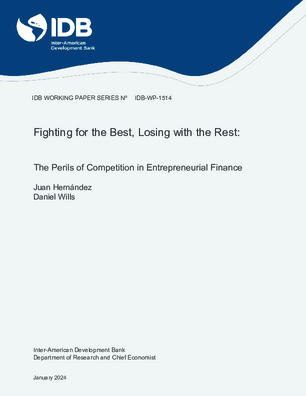Fighting for the Best, Losing with the Rest: The Perils of Competition in Entrepreneurial Finance
Date
Jan 2024
Financiers in early-stage entrepreneurial finance are known for their “spray-and-pray” approach, where they fund multiple start-ups expecting profits on a few to compensate losses on a lot of failed ones. We develop a theoretical framework in which financiers compete to fund entrepreneurs in an environment featuring risk, adverse selection, and limited liability. Financiers use steep payoff schedules to screen entrepreneurs, but limited liability implies they can only do so by giving more to all entrepreneurs. In equilibrium, competition for the best entrepreneurs forces intermediaries to offer better terms to all customers, there is cross-subsidization among entrepreneurs, and intermediation profits are zero.
Competition among financial intermediaries always forces them to fund projects with negative expected returns both from a private and from a social perspective. This is an extensive margin inefficiency, as all projects are funded at their efficient scale. The three main features of our framework (competition, adverse selection, and limited liability) are necessary to get the inefficient laissez-faire outcome and a role for regulation. The inefficiency shrinks, but some part will always persist, when firms can collateralize some portion of the credit as long as there is still an unsecured fraction. Additional imperfect information, like a credit score, may increase inefficiency. Crucially, a small externality on financiers exacerbates the extensive margin inefficiency, yielding a negative social surplus in the entrepreneurial financing market.
Competition among financial intermediaries always forces them to fund projects with negative expected returns both from a private and from a social perspective. This is an extensive margin inefficiency, as all projects are funded at their efficient scale. The three main features of our framework (competition, adverse selection, and limited liability) are necessary to get the inefficient laissez-faire outcome and a role for regulation. The inefficiency shrinks, but some part will always persist, when firms can collateralize some portion of the credit as long as there is still an unsecured fraction. Additional imperfect information, like a credit score, may increase inefficiency. Crucially, a small externality on financiers exacerbates the extensive margin inefficiency, yielding a negative social surplus in the entrepreneurial financing market.
Generative AI enabled





